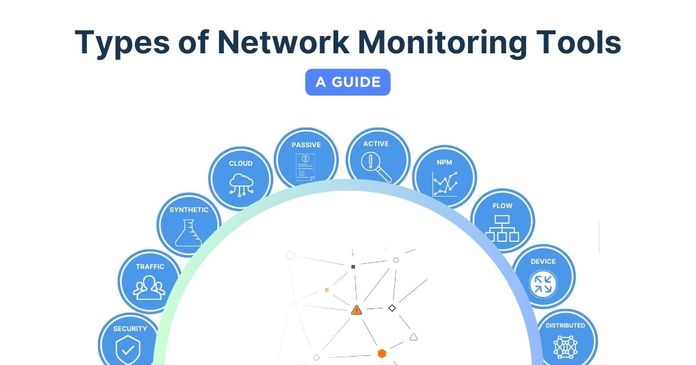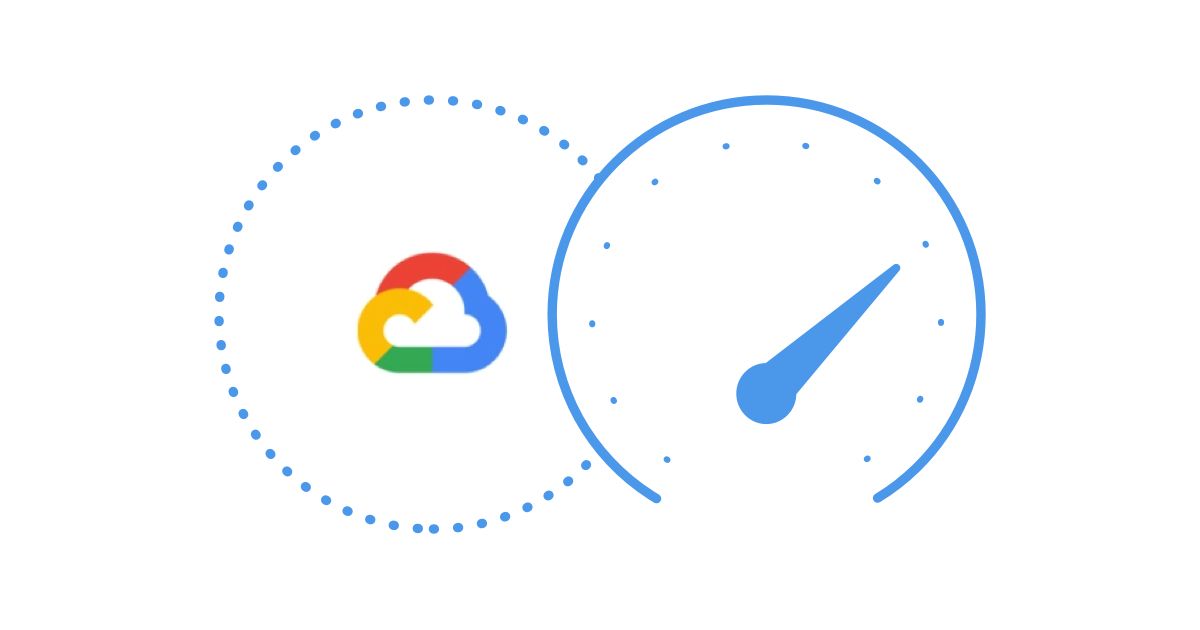Table of Contents
Table of Contents
Hybrid networks, which combine on-premises infrastructure with cloud-based services, have become the backbone of modern operations. While they offer numerous advantages, they also present unique challenges when it comes to network monitoring and management.
Maintaining the health and security of a hybrid network requires a comprehensive understanding of its intricate architecture and real-time visibility into its performance. This is where the concept of "end-to-end visibility" comes into play – the ability to monitor and analyze network traffic, applications, and services seamlessly across both on-premises and cloud environments.
In this blog post, we'll delve into the crucial topic of monitoring hybrid networks for end-to-end visibility, exploring why it's essential for businesses in today's digital age. We'll also provide you with actionable insights and best practices to ensure your hybrid network operates at its full potential while safeguarding your data, applications, and ultimately, your bottom line.
Whether you're a small startup or a large enterprise, understanding how to achieve end-to-end visibility in your hybrid network is a must for staying competitive, resilient, and responsive to the ever-evolving demands of the business world. Join us on this journey as we unravel the complexities of hybrid network monitoring, empowering your organization to thrive in the digital realm.
To effectively monitor a hybrid network, we first need to understand what it is, and how it works.
A hybrid network is a type of computer network infrastructure that combines two or more different networking technologies or architectures to create a unified and versatile network environment.
These technologies typically include traditional on-premises (local area network or LAN) infrastructure and cloud-based services or resources. The goal of a hybrid network is to leverage the strengths of both on-premises and cloud-based solutions, allowing organizations to achieve a balance between control, scalability, cost-efficiency, and flexibility.
Here are some key components and characteristics of a hybrid network:
- On-Premises Infrastructure: This refers to the network hardware and resources that are physically located within an organization's premises. It can include servers, routers, switches, firewalls, and other networking equipment.
- Cloud Services: In a hybrid network, cloud services are integrated into the network architecture. These services can include public cloud platforms (like AWS, Azure, or Google Cloud), private cloud resources, or even software-as-a-service (SaaS) applications hosted in the cloud.
Hybrid networks have become increasingly popular as businesses seek to harness the benefits of the cloud while preserving their existing investments in on-premises infrastructure. This approach offers a balance between control and flexibility, enabling organizations to meet the evolving demands of the digital era.
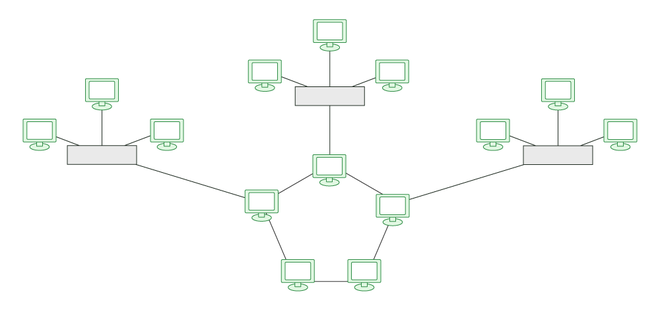

In the ever-evolving landscape of technology, businesses are faced with critical decisions about their network infrastructure. Among the options available, hybrid networks have emerged as a compelling choice for organizations across various industries. But what drives businesses to opt for these hybrid architectures?
In this section, we'll delve into the motivating factors and advantages that lead companies to embrace hybrid networks.
- Scalability and Flexibility: Hybrid networks offer businesses the flexibility to scale their infrastructure as needed. They can utilize cloud resources to handle increased demand during peak periods while maintaining core operations on-premises. This scalability ensures that businesses can adapt to changing workloads and seasonal fluctuations without overcommitting to costly hardware.
- Cost-Efficiency: Hybrid networks allow companies to optimize their IT spending. By shifting some workloads to the cloud, organizations can reduce capital expenditures on on-premises hardware and data centers. Instead, they pay for cloud resources on a variable, as-needed basis, leading to potential cost savings.
- Geographic Reach: For businesses with a global presence, hybrid networks enable them to extend their network infrastructure to multiple regions and data centers. This geographic reach ensures low-latency access to applications and services for users and customers worldwide.
- Adoption of Cloud Services: Many businesses are eager to take advantage of cloud-based services such as Software-as-a-Service (SaaS), Infrastructure-as-a-Service (IaaS), and Platform-as-a-Service (PaaS). Hybrid networks provide a seamless way to integrate these services into existing IT infrastructures.
- Legacy Systems Integration: Businesses with legacy systems can gradually transition to more modern, cloud-native architectures without the need for a complete overhaul. Hybrid networks allow for the integration of legacy systems with cloud resources, preserving valuable investments.
In summary, businesses opt for hybrid networks because they provide a strategic approach to networking that combines the best of both on-premises and cloud worlds. This flexibility, cost-effectiveness, resilience, and alignment with business goals make hybrid networks an attractive choice for organizations of all sizes and industries.
For organizations seeking comprehensive hybrid network monitoring tools, Obkio's Network Monitoring tool is the ideal choice. Obkio's purpose-built solution offers real-time visibility, proactive troubleshooting capabilities, and valuable insights into hybrid networks, ensuring optimal performance and reliability.
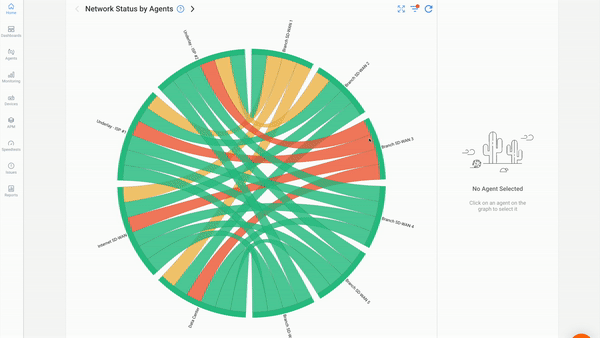
Why Choose Obkio for Hybrid Network Monitoring?
- Comprehensive Visibility: Obkio provides end-to-end visibility across both on-premises and cloud environments, encompassing network traffic, application performance, and user experience monitoring.
- Easy Setup: Users can effortlessly set up Obkio's Network Monitoring tool without requiring extensive technical expertise, enabling rapid deployment and immediate benefits.
- Proactive Issue Resolution: Obkio's proactive approach helps organizations identify and resolve network issues before they disrupt business operations. Instant alerts and actionable insights keep networks running smoothly.
- Scalability: Obkio caters to businesses of all sizes, ensuring scalability to meet evolving network demands with confidence.
Don't leave hybrid network performance to chance. Organizations can harness the capabilities of Obkio's Network Monitoring tool to proactively and efficiently manage their network infrastructure.

Understanding the architecture of a hybrid network is essential for navigating the complexities of modern networking. In this section, we'll dissect the components that make up a hybrid network infrastructure.
From traditional data centers to cloud resources, local and wide area networks, and the various technologies binding them together, we'll provide a clear picture of what a hybrid network typically encompasses. Join us as we embark on a journey through the intricate web of on-premises and cloud-based infrastructure that powers today's dynamic organizations.
A hybrid network infrastructure combines on-premises and cloud resources to create a flexible, scalable, and interconnected network. Here's what it typically looks like:
- On-Premises Data Centers: Traditional data centers housing physical servers, storage, and networking equipment serve as the foundation. These may include headquarters, branch offices, and colocation facilities.
- Local Area Networks (LANs): LANs connect devices within on-premises facilities. They use Ethernet and switches to provide high-speed connections for internal traffic.
- Wide Area Networks (WANs): WANs connect geographically dispersed locations. They include private links like MPLS and public connections like the Internet.
- Cloud Resources: Cloud providers like AWS, Azure, or Google Cloud offer virtualized servers, storage, databases, and services hosted in data centers worldwide.
- Virtual Private Clouds (VPCs): Cloud platforms allow organizations to create VPCs, isolated networks where they deploy cloud resources while maintaining control over IP addressing and security.
- Hybrid Connectivity: VPNs, direct connections (e.gAzure ExpressRoute or AWS Direct Connect), or SD-WAN solutions establish secure connections between on-premises and cloud environments.
- Load Balancers: Load balancers distribute incoming traffic across multiple on-premises and cloud servers, ensuring high availability and scalability.
- Application Delivery Controllers (ADCs): ADCs optimize application performance by managing traffic, SSL termination, and caching, often deployed both on-premises and in the cloud.
- SDN and SD-WAN: Software-Defined Networking (SDN) and SD-WAN technologies offer centralized network control and dynamic traffic management for hybrid environments.
- Edge Computing: Edge servers and devices bring compute resources closer to end-users or IoT devices, reducing latency and enhancing responsiveness.
- Containers and Orchestration: Containerization platforms like Docker and Kubernetes enable consistent application deployment across hybrid environments.
- IoT Devices: Internet of Things (IoT) devices and sensors collect data from various locations and transmit it for analysis, often through both on-premises and cloud infrastructure.
- Content Delivery Networks (CDNs): CDNs optimize content delivery by caching and serving it from distributed locations, enhancing performance for users worldwide.
- Backup and Disaster Recovery: Hybrid networks incorporate backup and disaster recovery solutions to ensure data resiliency and business continuity.
The hybrid network infrastructure is dynamic, adaptive, and designed to provide organizations with the flexibility to scale resources, optimize performance, and leverage the benefits of both on-premises and cloud environments.
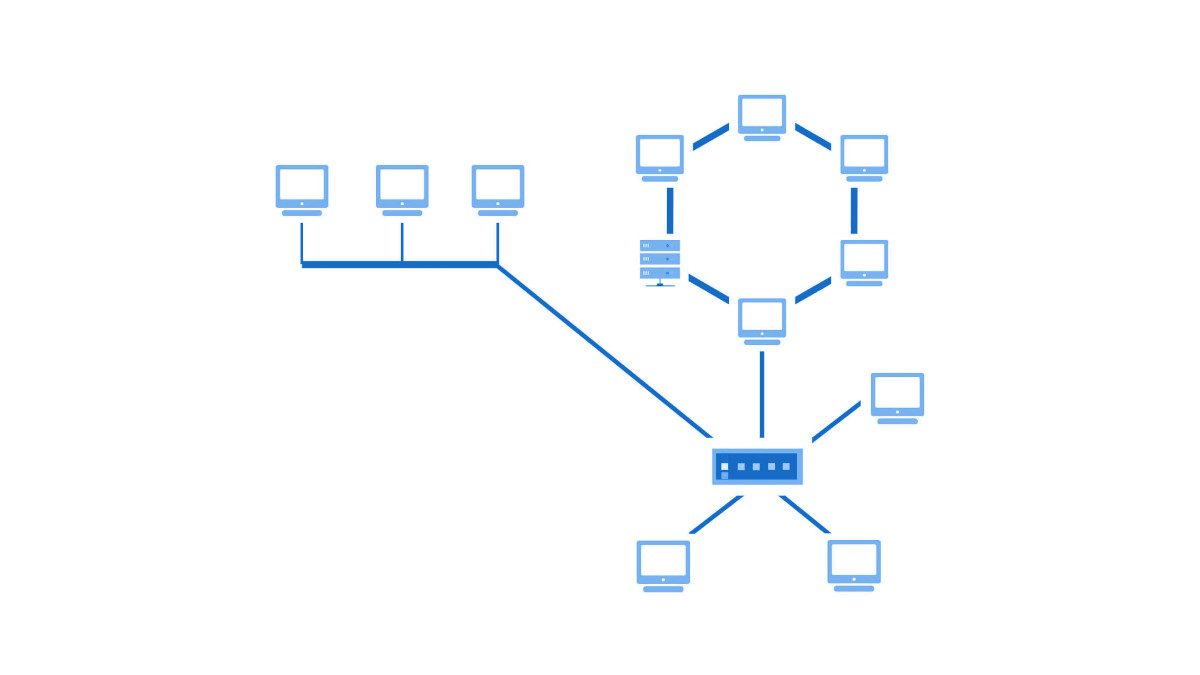
Hybrid networks, which seamlessly integrate on-premises infrastructure with cloud-based services, have become the linchpin of modern business operations. However, managing these complex, hybrid environments presents a unique set of challenges that traditional monitoring approaches struggle to address effectively.
- Limited Visibility: Traditional network monitoring tools are often designed for on-premises environments and lack the capabilities to provide complete visibility into cloud-based resources. This results in visibility gaps, making it difficult to track the performance of applications and services hosted in the cloud.
- Dynamic Nature of Cloud Resources: Cloud resources are highly dynamic, with instances scaling up or down in response to demand. Traditional tools may not adapt well to these fluctuations, leading to inaccurate data and an inability to monitor effectively in a cloud-native context.
- Scalability Challenges: As organizations scale their hybrid networks, traditional monitoring solutions may struggle to keep pace. They might require additional hardware or licenses to accommodate network growth, which can be costly and cumbersome.
- Data Traffic Complexity: Hybrid networks often involve intricate traffic patterns as data flows between on-premises and cloud environments. Traditional monitoring tools may struggle to decipher these complex patterns, making it challenging to pinpoint performance bottlenecks or security vulnerabilities.
Given the limitations of traditional approaches, specialized hybrid network monitoring tools have become essential for businesses seeking to maximize the benefits of their hybrid network architectures.
Hybrid network monitoring is the practice of monitoring and managing the performance, security, and network availability of a network infrastructure that combines on-premises components with cloud-based resources. This approach is essential for organizations that utilize both traditional data centers and cloud services to support their operations.
Here's why Hybrid Network Monitoring is important:
- Seamless Integration: Specialized hybrid network monitoring tools are designed to seamlessly integrate with both on-premises and cloud-based components. They offer a unified view of the entire network ecosystem, ensuring comprehensive visibility.
- Cloud Compatibility: These tools are built to adapt to the dynamic nature of cloud resources, automatically scaling with the network's needs and providing real-time insights into cloud performance.
- Traffic Analysis: They excel in analyzing complex data traffic patterns, making it easier to identify network issues, optimize performance, and enhance security.
- Smart Alerting: Specialized solutions often include intelligent alerting mechanisms that reduce alert fatigue by prioritizing critical issues and filtering out noise.
In summary, while traditional monitoring approaches served well in the past, the advent of hybrid networks demands a more sophisticated, specialized approach. Specialized hybrid network monitoring tools address the unique challenges posed by these environments, empowering businesses to ensure network performance, security, and compliance while reaping the full benefits of their hybrid infrastructure.
Discover the superheroes of network monitoring tools in our comprehensive guide. Unveil the perfect type of network monitoring tool for your business.
Learn more

Now, let’s delve into the fundamental building blocks of hybrid network monitoring. In this section, we're going to cut through the technical jargon and take a closer look at the essential components that make hybrid network monitoring work seamlessly.
Think of this as your toolkit for keeping tabs on your hybrid network's health. We'll explore network monitoring tools, on-premises network monitoring, cloud network monitoring, and the game-changing hybrid network monitoring tools. These are the tools and strategies you need to ensure your hybrid network is running at its best.
Whether you're a seasoned IT pro or just someone looking to better understand your network, this chapter has something valuable for everyone. So, let's jump right in and explore the core elements of hybrid network monitoring!
Network Monitoring tools are the heart of any network monitoring strategy. These tools are designed to collect, analyze, and present data on network performance and health.
In the context of hybrid networks, the choice of monitoring tools is pivotal to ensuring seamless operations. Here's an overview of the key aspects of to look for with hybrid network monitoring tools:
- Functionality: Network Monitoring tools vary in functionality, ranging from basic network performance monitoring to advanced analytics and security features. It's essential to select tools that align with your specific monitoring goals.
- Deployment Models: Network Monitoring tools can be deployed on-premises, in the cloud, or as a hybrid solution themselves. Understanding the deployment models available is crucial for integration within your network infrastructure.
- Scalability: As your hybrid network grows, your monitoring tools should scale accordingly. Scalability ensures that the monitoring solution can keep up with increased network complexity and traffic.
On-premises network monitoring focuses on monitoring the traditional, physical components of a network that are located within an organization's premises.
These components include servers, routers, switches, firewalls, and other networking equipment.
- Real-time Performance Metrics: Monitoring on-premises infrastructure provides real-time visibility into the performance of critical network components. This includes metrics like bandwidth utilization, latency, and packet loss.
- Security: Monitoring on-premises infrastructure is crucial for detecting and mitigating security threats within an organization's local network. Intrusion detection, firewall monitoring, and anomaly detection are common security-related features.
- Availability: Ensuring the availability of on-premises resources is paramount for business continuity. Monitoring tools can provide insights into the network uptime and reliability of network devices and services.
Cloud network monitoring extends monitoring capabilities to cloud-based resources and services. As more organizations migrate to the cloud, this aspect of network monitoring becomes increasingly important.
- Cloud Resource Visibility* Cloud monitoring tools offer insights into the performance and availability of cloud resources, such as virtual machines, databases, and storage services.
- Integration with Cloud Providers: Effective cloud network monitoring tools integrate seamlessly with popular cloud providers like AWS, Azure, and Google Cloud. This integration ensures comprehensive visibility across your cloud infrastructure.
- Cost Optimization: Cloud monitoring helps organizations optimize their cloud spending by tracking resource utilization and identifying opportunities for resource allocation adjustments.
Hybrid network monitoring tools bring together the capabilities of on-premises and cloud network monitoring into a unified solution. These platforms offer a holistic view of the entire network ecosystem, bridging the gap between local and cloud environments.
- Centralized Visibility: Hybrid network monitoring tools provide a centralized dashboard that displays data from on-premises and cloud resources, simplifying management and troubleshooting.
- Cross-Environment Analytics: They enable cross-environment analytics, allowing organizations to correlate data from both on-premises and cloud components to identify performance bottlenecks and issues.
- Flexibility: Hybrid network monitoring tools offer flexibility in deployment, enabling organizations to choose whether to deploy the monitoring solution on-premises, in the cloud, or in a hybrid configuration.
Now that we’ve explored the crucial components of hybrid network monitoring, emphasizing the importance of selecting the right monitoring tools, and effectively monitoring on-premises and cloud resources, you may be wondering: How do I actually set this up?

When it comes to keeping tabs on and managing your complex hybrid network, using a dedicated network monitoring tool is like having the perfect tool for the job. Sure, you could try using two separate monitoring solutions, but a specialized network monitoring tool offers an all-in-one, tailored solution designed especially for the unique challenges of hybrid network monitoring.
Imagine being able to see everything that's happening in your hybrid network, from the nitty-gritty details to the big picture. That's what a dedicated monitoring tool does. It shines a spotlight on network traffic, applications, and services, no matter if they're chilling in your office server room or floating in the cloud.
On that note:
In a hybrid network, it's crucial to monitor various components to ensure optimal performance, security, and reliability. Here are the key parts of a network that you should monitor in a hybrid network:
1. Network Traffic:
- Bandwidth Utilization: Monitor the amount of data passing through network connections to identify potential bottlenecks or overutilization.
- Packet Loss: Keep an eye on packet loss rates, as excessive packet loss can degrade network performance and lead to connectivity issues.
- Latency: Measure network latency to ensure that data is transmitted with minimal delay, especially for real-time applications like VoIP or video conferencing.
2. Devices and Hardware:
- Routers and Switches: Monitor the health and performance of network routers and switches, including CPU usage, memory, and interface status.
- Firewalls: Ensure that firewalls are functioning correctly and monitor for any unusual or unauthorized traffic patterns.
- Servers and Endpoints: Monitor the performance and availability of on-premises servers and endpoints to detect issues that may impact users.
3. Cloud Services:
- Cloud VMs and Instances: Monitor the performance and availability of virtual machines (VMs) and instances hosted in cloud environments like AWS, Azure, or Google Cloud.
- Cloud Storage: Keep tabs on cloud storage usage, access patterns, and potential data transfer costs.
- Cloud Databases: Monitor the performance and query execution of cloud-hosted databases.
4. Applications and Services:
- Application Performance: Monitor the performance of critical applications to ensure they meet service-level objectives (SLOs) and provide a positive user experience.
- Service Availability: Track the availability of web services, APIs, and other online services, both on-premises and in the cloud.
Monitoring these aspects of your hybrid network helps you proactively identify issues, optimize performance, enhance security, and ensure a seamless user experience across both on-premises and cloud environments.
So, let's dive into how to deploy a dedicated hybrid network monitoring tool to give organizations the superpower of complete visibility and total control over their hybrid network setup.
In the ever-evolving landscape of hybrid networks, where on-premises infrastructure meets the cloud, having a reliable monitoring solution is like having a compass in uncharted territory. This is where Obkio steps in as your trusted guide, your go-to Hybrid Network Monitoring tool that simplifies the complexities of managing network performance across diverse environments.
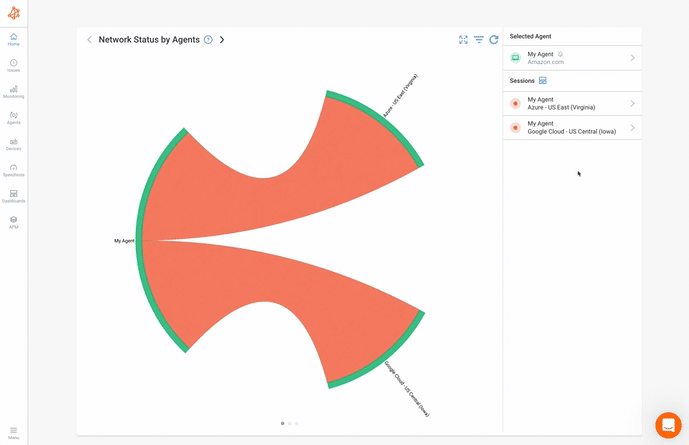
- Complete Hybrid Visibility: Obkio offers end-to-end visibility into your hybrid network, effortlessly bridging the gap between your on-premises and cloud components. It's like having a bird's-eye view of your entire network ecosystem, accessible from a single dashboard.
- Real-time Network Performance Monitoring: Obkio provides real-time monitoring of network performance, allowing you to track key metrics such as latency, packet loss, and bandwidth utilization.
- Proactive Issue Detection and Alerts: Obkio sends network monitoring alerts and notifications when network performance thresholds are breached or anomalies are detected.
- User-Friendly Interface: Obkio offers a user-friendly interface that makes it easy to navigate, configure, and access network monitoring data.
- Multi-Cloud and Hybrid Environment Support: Obkio supports monitoring network performance across multi-cloud and hybrid environments, allowing you to monitor and manage your network regardless of the cloud provider or infrastructure setup.
- Historical Performance Data and Reporting: Obkio stores historical performance data, enabling you to analyze trends and patterns over time. It also generates comprehensive reports, allowing you to review and share network performance metrics with stakeholders.

To monitor the end-to-end visibility of your hybrid network, you need a watchful eye on every part of your network. Hybrid networks can be complex, and have a lot of different moving parts, so you need a way to monitor your WAN, LAN, network devices, and cloud services. That's where the Network Monitoring Agents come in.
Obkio's Monitoring Agents are deployed at key network locations to continuously monitor performance between them. They’re a unique software that can be deployed on-premise and in the cloud.
Effective network monitoring begins with a deep understanding of your local network's performance. This is where the action is happening within your organization, and it's crucial to keep a watchful eye on it. Here's why:
Introducing the On-Premise Agent!
- Key Network Locations: To get a comprehensive view of your local network, you'll want to deploy Monitoring Agents in key locations. These locations might include your head office, branch offices, data centers, and even critical network devices like routers and switches.
- Choose Your Agent Type: There are a variety of Agents available, both software and hardware - so you can monitor any type of network. For your local network, we recommend the Software (Linux, Windows, Docker) agent that can be installed on your favourite Linux distribution, including Amazon Linux and Amazon Linux 2.
- Local Monitoring: By placing Monitoring Agents strategically in your local network, you create a network monitoring ecosystem that covers all the critical areas. These agents collect data on network performance, traffic patterns, and potential issues in real-time.
- Data Collection: These agents continuously collect data on factors such as bandwidth utilization, network utilization, packet loss, latency, and the overall health of your network devices. This data serves as the foundation for making informed decisions and taking proactive steps to maintain network efficiency.
Monitoring your local network performance is the first crucial step in maintaining a healthy, efficient network environment. Deploying Monitoring Agents strategically ensures that you have eyes and ears in all the right places, giving you the insights needed to keep your network running smoothly and your organization operating at its best.
- Performance Optimization: By monitoring your local network, you can identify performance bottlenecks, congestion points, or latency issues that might be slowing down data transmission. This insight is invaluable for optimizing network performance and ensuring that your employees can work efficiently.
- Troubleshooting: When issues arise within your local network, such as sudden drops in connectivity or service disruptions, monitoring becomes your troubleshooting ally. It helps you quickly pinpoint the source of the problem, reducing downtime and minimizing disruptions to your business operations.
So, get those agents in place, and let the network monitoring journey begin!

In the world of hybrid networks, where the cloud is often a significant player, ensuring the performance and reliability of your cloud services is paramount. This is where Public Monitoring Agents swoop in as your network's loyal allies, simplifying the process of monitoring the cloud components of your hybrid network.
Here's how they work their magic:
Public Monitoring Agents are like pre-trained detectives, already in position and ready to get to work. They are set up and operated by either the Obkio team or trusted service providers. You don't need to go through the hassle of deploying additional infrastructure or agents yourself.
These agents are your eyes and ears in the cloud. They extend your monitoring capabilities beyond the boundaries of your local network and into the cloud environment. Whether your cloud resources reside in AWS, Azure, Google Cloud, or other providers, Public Monitoring Agents keep an eye on them.
Choose the Public Monitoring Agents based on the Cloud service you want to monitor, such as:
- AWS Monitoring Agent: The AWS Monitoring Agent allows you to proactively monitor network performance between your local network to the AWS network. They provide complete and continuous visibility so you can easily identify the source and cause of AWS network issues impacting your network performance.
- Azure Monitoring Agent: The Azure Monitoring Agent allows you to proactively monitor network performance between your local network to the Microsoft Azure network. They provide complete and continuous visibility so you can easily identify the source and cause of Azure network issues impacting your network performance.
- The Google Cloud Agent: The Google Cloud Monitoring Agent allows you to proactively monitor network performance between your standard on-premise Agents and the Google Cloud Platform. With 360-degree visibility, you can easily identify the source and cause of network issues affecting Google Cloud Interconnect based on the monitoring data from these Monitoring Agents.
- Find all the Agents available in the Public Monitoring Agent Directory.
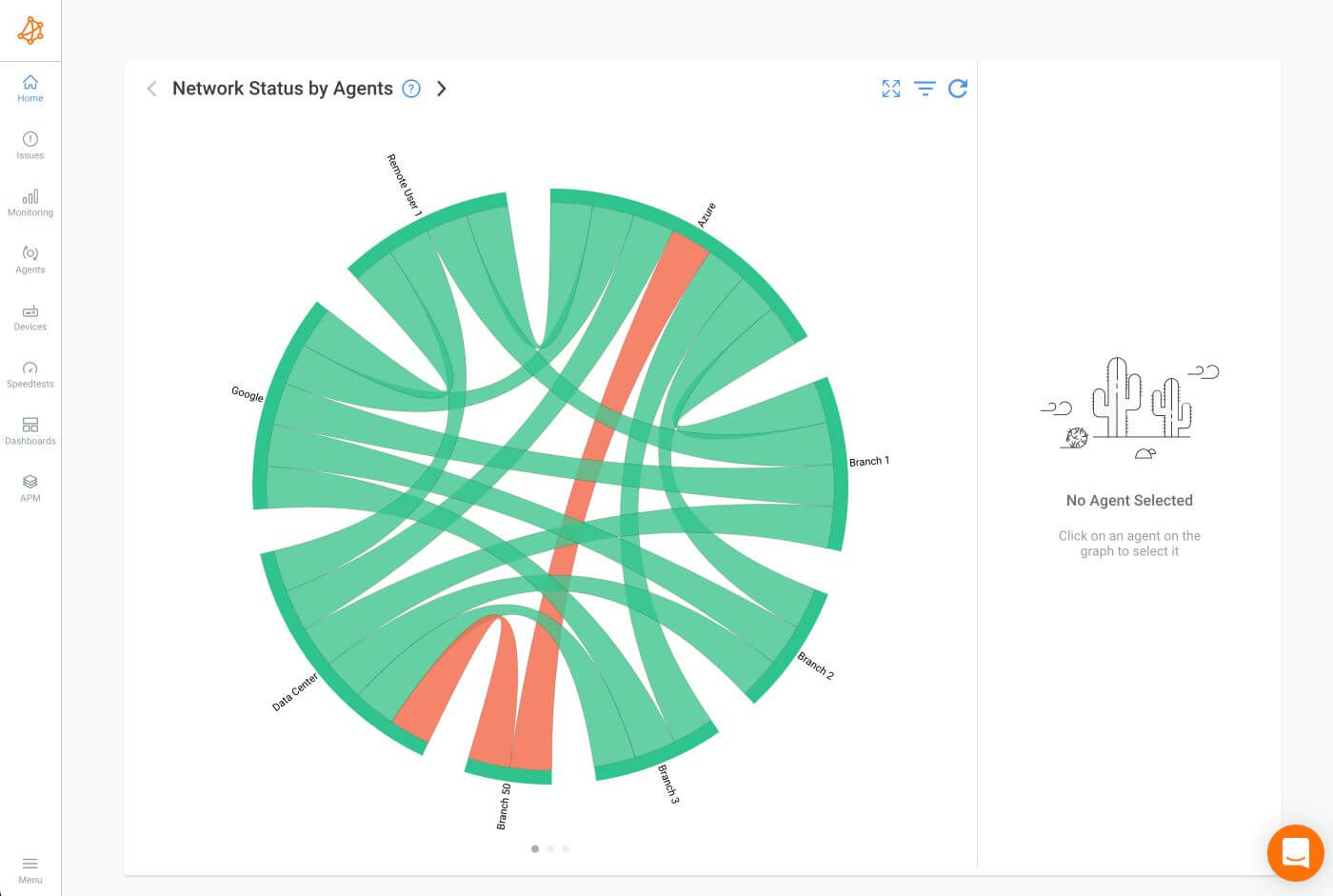
- Seamless Cloud Monitoring: Monitoring the cloud parts of your hybrid network can be a bit like navigating a mysterious fog. Public Monitoring Agents cut through that fog by providing you with clear, real-time insights into the performance of your cloud-based applications, services, and infrastructure.
- Visibility to Service Providers: Public Monitoring Agents also extend their reach to service providers. They allow you to monitor the performance of your network up to the doorstep of your cloud service providers. This visibility ensures that you can hold your providers accountable for delivering the services you expect.
In essence, Public Monitoring Agents are your ticket to hassle-free, cloud-centric network monitoring. They effortlessly bridge the gap between your on-premises infrastructure and the cloud, ensuring that you have full visibility into the performance of your hybrid network. So, whether you're reaching for the skies with your cloud resources or staying grounded in your local network, Public Monitoring Agents have got your back, making hybrid network monitoring a breeze.
Monitoring network devices in hybrid networks is essential for network health and security. These devices serve as the critical links between on-premises and cloud environments, and their proper functioning is vital.
By monitoring metrics like CPU usage, memory utilization, and configuration settings, you can identify performance bottlenecks, security vulnerabilities, and configuration errors.
Ultimately, by maintaining the health and performance of network devices, organizations can maximize the benefits of their hybrid networks, enabling efficient data flow and secure operations across on-premises and cloud environments.
Fortunately, Obkio has you covered with its Network Device Monitoring feature! By leveraging Ultra-Fast Polling at intervals as frequent as every 30 seconds, Obkio ensures vigilant monitoring of your network devices. This approach yields highly accurate results compared to traditional software polling, which typically occurs every 5 minutes.
With this feature at your disposal, you can have peace of mind, knowing that your network devices are under constant surveillance, enabling swift detection of any issues that may arise.
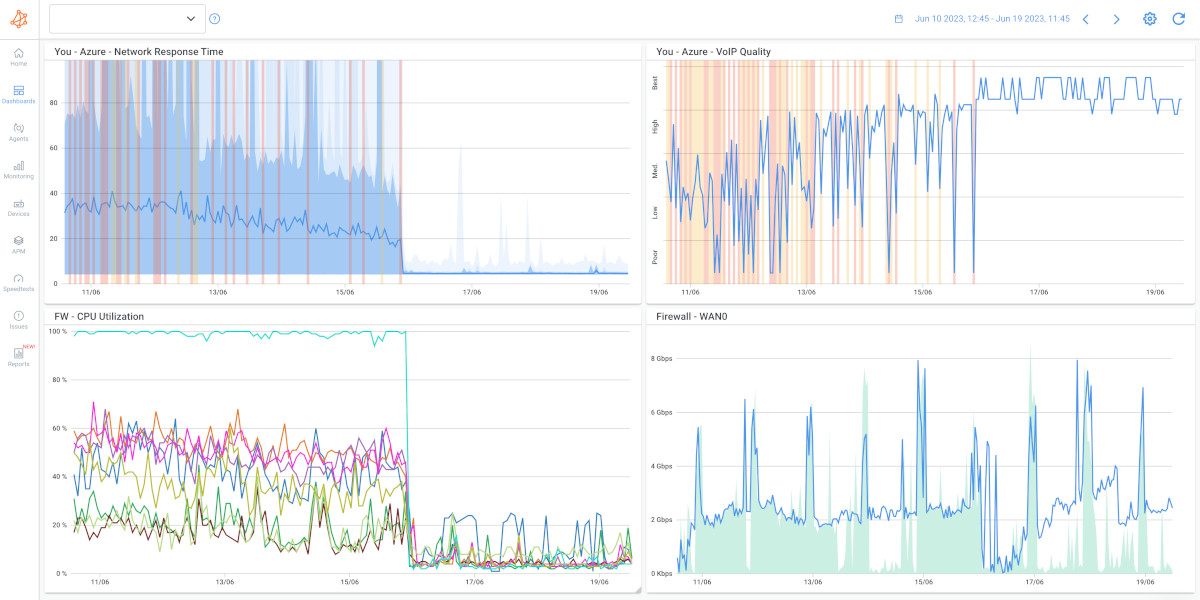
In a hybrid network, it's essential to monitor various network devices to ensure the network's health, security, and performance:
- Routers: Routers are crucial for directing network traffic between on-premises and cloud environments. Monitor them for metrics like CPU usage, memory utilization, and routing table changes.
- Switches: Switches play a central role in local network connectivity. Monitor switch ports, VLANs, and traffic patterns to ensure efficient data transmission.
- Firewalls: Firewalls are essential for network security. Monitor firewall rules, intrusion attempts, and traffic filtering to safeguard your network.
- Load Balancers: Load balancers distribute network traffic across multiple servers or resources for load distribution and redundancy. Monitor their performance and the balanced traffic to ensure even distribution.
- Gateways: Gateways, often used for VPN connectivity, connect on-premises networks to the cloud. Monitor gateway health, VPN tunnels, and data encryption.
- Proxy Servers: If used, proxy servers handle internet requests on behalf of clients. Monitor proxy server performance, caching, and access logs.
- DNS Servers: DNS servers resolve domain names to IP addresses. Monitor DNS server response times, cache status, and DNS query patterns.
- DHCP Servers: DHCP servers assign IP addresses to devices on the network. Monitor DHCP server availability and IP address assignment.
- NAT Devices: Network Address Translation (NAT) devices translate private IP addresses to public IP addresses. Monitor NAT mappings, translation errors, and IP address allocation.
- Wireless Access Points (WAPs): In hybrid networks with wireless connectivity, WAPs are critical. Monitor signal strength, client connections, and authentication status.
- Network Attached Storage (NAS) Devices: If used for data storage, monitor NAS device health, storage capacity, and access permissions.
- VoIP Gateways: If Voice over IP (VoIP) is part of your network, monitor VoIP gateways for call quality, call volume, and latency.
- VPN Concentrators: For remote access and secure communications, monitor VPN concentrators for client connections, throughput, and encryption.
- Network Time Protocol (NTP) Servers: NTP servers synchronize network devices' clocks. Monitor NTP server accuracy and synchronization status.
- Network Printers: If printers are part of your network, monitor their status, ink/toner levels, and error logs.
- Edge Devices (IoT): If your network includes IoT devices at the edge, monitor their connectivity, data transmission, and security vulnerabilities.
Monitoring these network devices in a hybrid network ensures network reliability, security, and performance across on-premises and cloud environments, allowing organizations to proactively address issues and maintain a seamless user experience.
Once you've deployed Obkio in your hybrid network, it becomes your vigilant guardian. Obkio operates by continuously exchanging synthetic data packets between Monitoring Agents strategically placed in your network, including on-premises and cloud environments.
This synthetic data exchange is like the heartbeat of your network, allowing Obkio to assess its performance in real-time. By combining the power of your locally deployed Monitoring Agents with Public Monitoring Agents, you achieve a comprehensive view of your entire hybrid network. This includes your local network, the cloud components, and the connections to your cloud service providers.
Obkio excels at pinpointing network issues before they escalate into major problems. By constantly analyzing metrics like latency, packet loss, and bandwidth utilization, Obkio detects anomalies that may indicate network degradation or inefficiencies.
Whether it's a sudden spike in latency or an unusual increase in packet loss, Obkio's watchful eye ensures that network issues are identified promptly.
To effectively manage your network, it's crucial to establish performance baselines. Obkio helps you do just that by continuously collecting data on key performance indicators. Over time, it builds a comprehensive dataset that reflects your network's normal behaviour. This baseline becomes your reference point, enabling you to recognize deviations and assess the impact of network changes or upgrades.
Obkio doesn't stop at real-time monitoring. It also acts as your network historian. By archiving historical performance data, Obkio provides valuable insights into long-term trends. This historical perspective allows you to identify recurring issues, track performance improvements, and make data-driven decisions when optimizing your hybrid network.
Proactive network management is the name of the game, and Obkio excels in this department. Based on the network baselines and thresholds you've defined, Obkio can automatically trigger alerts when it detects anomalies or breaches in network metrics.
These alerts can be customized to notify you through various channels, ensuring that you're always informed of network issues in real-time.
In a dynamic hybrid network environment, Obkio brings peace of mind by offering continuous monitoring and robust issue detection. Whether it's a minor hiccup or a potential network crisis, Obkio's synthetic data exchange, performance baselines, historical data analysis, and customizable alerts empower you to maintain a stable, high-performance network that seamlessly connects your on-premises and cloud resources.
It's like having a network troubleshooter on standby, ready to tackle any challenge that comes your way.


In this chapter, we're going to roll up our sleeves and dive into the nuts and bolts of monitoring metrics and KPIs in the context of your hybrid network. It's like getting your dashboard ready for a long road trip – you want all the vital gauges and indicators to ensure a smooth journey.
Your hybrid network is a dynamic ecosystem where on-premises and cloud elements intermingle. To ensure its optimal performance, you need to know what to watch closely. We'll shine a light on the essential network metrics that matter most in this intricate landscape.
From latency and bandwidth utilization to packet loss and error rates, we'll demystify these metrics and show you how they impact your network's health and user experience.
Here are some key network metrics you should monitor for hybrid networks:
- Latency: Latency measures the delay in data transmission between source and destination. High latency can result in sluggish network performance and impact user experience, especially for real-time applications.
- Bandwidth Utilization: Monitor the percentage of available bandwidth being used. High utilization can lead to congestion and degraded network performance.
- Packet Loss: Packet loss indicates the percentage of data packets that fail to reach their destination. Even a small amount of packet loss can disrupt applications and services.
- Throughput: Throughput measures the actual data transfer rate between two points on the network. It's essential for assessing the network's ability to handle data loads.
- Jitter: Jitter is the variation in packet delay. Inconsistent jitter can lead to audio and video quality issues in real-time applications like VoIP (VoIP jitter) and video conferencing.
- Error Rates: Monitor error rates on network interfaces and devices. High error rates may indicate hardware or configuration issues.
- Network Congestion: Identify areas of network congestion, such as bottlenecks or high-traffic areas, to proactively address potential problems.
- Router and Switch CPU/Memory Usage: High CPU or memory usage on network devices can impact their ability to process traffic efficiently. Monitoring these metrics helps ensure device health.
- Quality of Service (QoS) Metrics: Evaluate the effectiveness of QoS policies in prioritizing critical network traffic and ensuring consistent performance for specific applications or services.
- VPN Performance Metrics: For hybrid networks using VPNs, monitor VPN tunnel status, throughput, and latency to ensure secure and efficient remote connectivity.
- Cloud Service Metrics: If your network includes cloud resources, monitor metrics provided by cloud service providers, such as AWS CloudWatch or Azure Monitor, to assess the health and performance of cloud-based components.
- DNS Response Times: Measure the time it takes for DNS queries to resolve, as slow DNS resolution can impact web and application performance.
- VoIP and Video Call Metrics: If VoIP and video calls are essential, monitor VoIP call quality metrics, including jitter, packet loss, and call setup times.
- Cloud Resource Utilization: Keep an eye on cloud resource utilization, such as CPU, memory, and storage, to optimize costs and ensure efficient resource allocation.
Monitoring these network metrics in your hybrid network provides a comprehensive view of network performance and helps you identify and address issues promptly, ensuring a seamless and secure network experience across both on-premises and cloud environments.
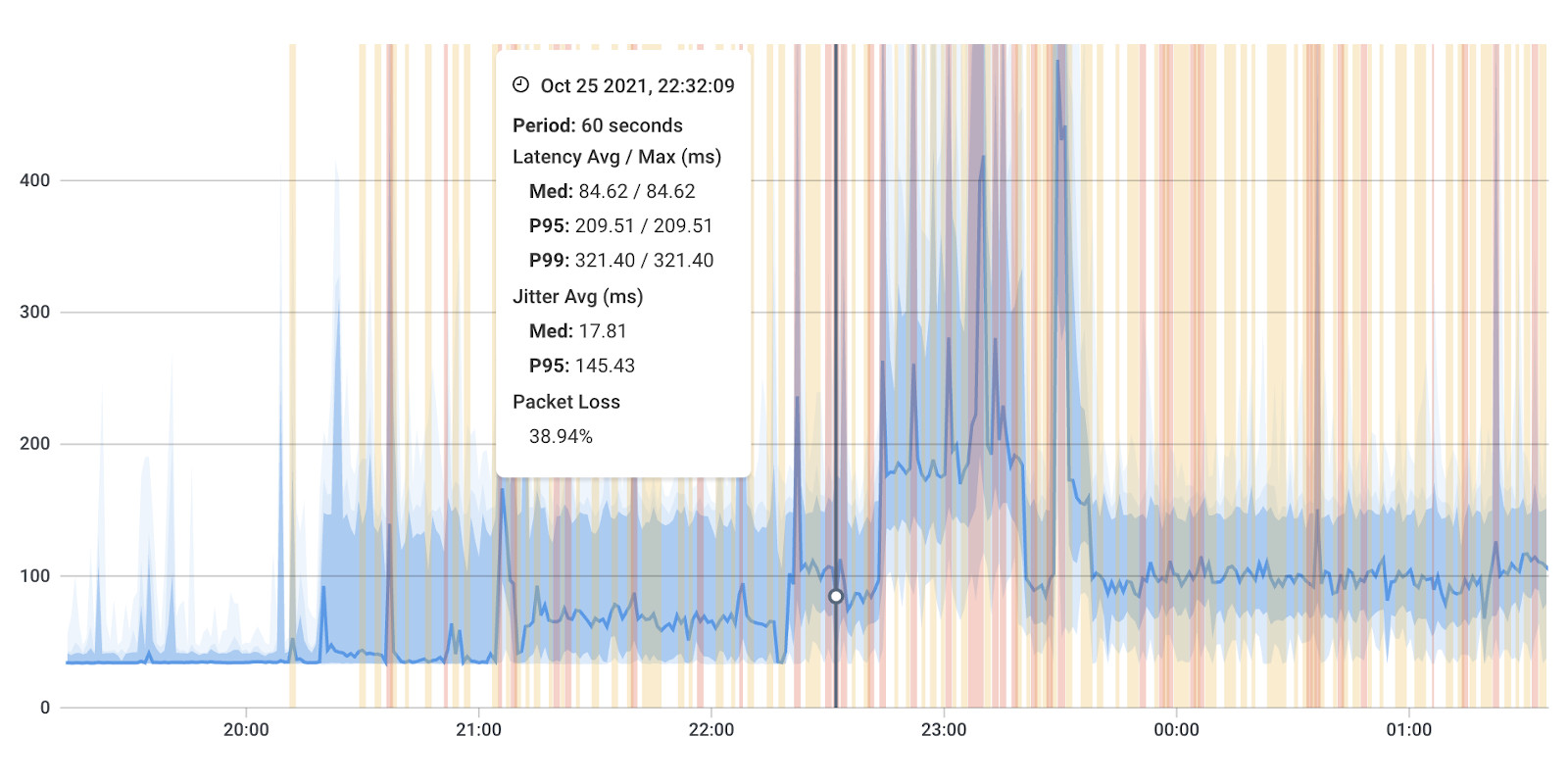
In the realm of modern networking, hybrid networks promise flexibility, scalability, and agility. Yet, navigating the intricate dance between local networks and the cloud requires a vigilant eye on network performance—a task that calls for specialized attention in the realm of hybrid networks.
In this section, we will delve into the critical importance of monitoring performance between your local network and the cloud within hybrid networks. In the intricate web of hybrid networks, every component plays a pivotal role, and the seamless flow of data between them is vital. It's not just about monitoring the performance of your local network or cloud resources in isolation; it's about ensuring that every connection point, every data transfer, and every interaction between these elements operates at peak efficiency.
Hybrid networks involve a combination of on-premises infrastructure and cloud services from various providers. Monitoring performance allows you to gain visibility into the end-to-end network path, including potential bottlenecks or connectivity issues at the hybrid network's boundary. This insight is essential for troubleshooting and optimizing connectivity.
Hybrid networks span on-premises and cloud environments, each with its own unique characteristics. By running performance tests that traverse this entire network path, you gain a holistic view of end-to-end performance. This assessment enables you to identify bottlenecks, latency hotspots, or packet loss zones that might otherwise go unnoticed.
Imagine a company that has an on-premises data center and utilizes cloud services for its web application. To ensure optimal network performance between the two environments, they deploy network monitoring tools such as Obkio. Here's how monitoring works in their hybrid network:
- Metrics Selection: The company selects key metrics for monitoring: latency, packet loss, and bandwidth utilization. They configure Obkio agents in their on-premises data center and cloud infrastructure.
- Regular Data Transmission: Synthetic data packets are continuously sent from the on-premises agent to the cloud agent and vice versa. These packets follow the same network paths as actual application data.
- Real-Time Analysis: Obkio's monitoring platform collects data from these synthetic packet exchanges in real-time. It calculates latency, packet loss, and bandwidth utilization metrics for each direction of data transfer.
- Alerting: The company sets alert thresholds. For example, they configure alerts to trigger if the round-trip latency exceeds 50 milliseconds or if packet loss surpasses 1%.
- Continuous Monitoring: Network administrators receive alerts whenever the thresholds are breached. They can then investigate the cause of the issue, whether it's a congested link, misconfiguration, or a cloud service provider's performance problem.
By monitoring network performance in this manner, the company ensures that the connection between their on-premises data center and the cloud operates smoothly. If issues arise, they can take proactive steps to resolve them before users experience disruptions in the web application or data transfer. This level of monitoring is crucial in maintaining a high-quality hybrid network experience.
In the complex world of hybrid networks, problems can arise from various sources – on-premises infrastructure, cloud components, connectivity between them, or even external factors. To diagnose common network problems effectively, follow these steps:
- Identify the Symptoms: Start by gathering information about the issue. What symptoms are users experiencing? Is it slow application performance, intermittent connectivity, or specific errors? Understanding the symptoms is the first step in narrowing down the problem's scope.
- Check Network Metrics: Utilize your network monitoring tools, like Obkio, to analyze key metrics and KPIs. Look for unusual patterns in latency, packet loss, bandwidth utilization, or any deviations from established baselines. These anomalies can often lead you to the root cause.
- Test Segments Independently: If possible, isolate segments of your hybrid network and test them independently. This can help determine whether the issue is localized to a specific part of the network.
Hybrid networks, which integrate on-premises infrastructure with cloud services, can face various network issues that impact performance, reliability, and security. Here are some common network issues that affect hybrid networks:
- Latency and Delay: High latency, often caused by long-distance data transmission between on-premises and cloud resources, can result in slow application performance and user dissatisfaction.
- Packet Loss: Packet loss occurs when data packets do not reach their destination. It can lead to data retransmissions, degraded voice or video quality, and decreased network efficiency.
- Bandwidth Constraints: Limited bandwidth capacity between on-premises and cloud environments can cause network congestion and impact the ability to transmit data efficiently.
- Intermittent Connectivity: Fluctuating or unstable network connectivity can disrupt services and hinder reliable communication between on-premises and cloud resources.
- Security Vulnerabilities: Hybrid networks introduce potential security risks at the points where on-premises and cloud environments connect. Failure to secure these connections can lead to data breaches or unauthorized access.
- Inconsistent Performance: Inconsistent network performance can result from varying cloud service quality, unpredictable internet congestion, or shared network infrastructure with other organizations.
- Lack of Visibility: Limited visibility into the performance and health of cloud-based components can hinder troubleshooting and proactive issue resolution.
- Monitoring and Management Complexity: Monitoring and managing the hybrid network, including both on-premises and cloud components, can be complex and resource-intensive.
By understanding and mitigating these challenges, organizations can optimize their hybrid networks to deliver reliable and secure connectivity between on-premises and cloud resources.
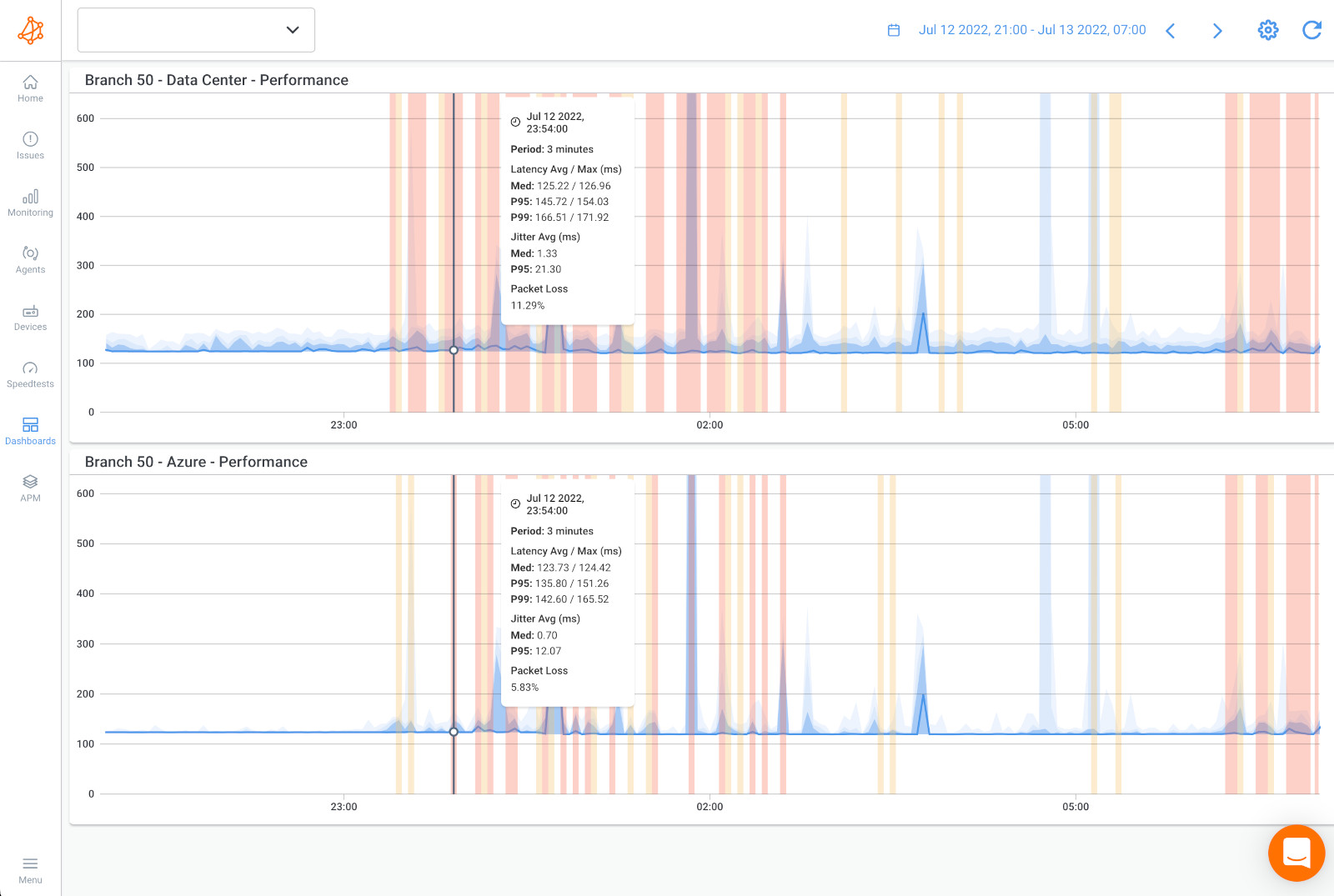
Troubleshooting hybrid networks using hybrid network monitoring tools can be a complex but manageable task with the right approach. Here are some tips to effectively troubleshoot hybrid networks:
- Establish Baselines: Before troubleshooting, establish performance baselines for your hybrid network. This includes defining expected values for key metrics like latency, packet loss, and bandwidth utilization. Baselines provide a reference point for identifying deviations from normal behaviour.
- Real-Time Monitoring: Utilize real-time monitoring tools like Obkio to continuously monitor network performance. Real-time data enables you to detect issues as they occur and respond promptly.
- Alert Configuration: Set up alerts based on predetermined thresholds for critical metrics. These alerts should be configured to notify you immediately when performance deviates from the established norms, allowing for proactive issue resolution.
- End-to-End Visibility: Use hybrid network monitoring tools that offer end-to-end visibility, covering both on-premises and cloud components. This comprehensive view helps identify where issues originate and how they propagate through the network.
- Segment Isolation: If an issue is affecting your hybrid network, try to isolate segments of the network for testing. This involves temporarily disconnecting or bypassing specific components to determine if the problem persists in a smaller, controlled environment.
- Packet Capture and Analysis: When troubleshooting complex issues, consider capturing and analyzing network packets. Tools like Wireshark can help you dive deep into network traffic to identify anomalies, errors, and potential sources of problems.
- Vendor and Service Provider Engagement: Don't hesitate to engage with cloud service providers, network vendors, or managed service providers when necessary. They can provide insights and support in diagnosing and resolving issues related to their services or products.
- Configuration Audits: Periodically audit configurations for on-premises devices, cloud resources, and network services. Misconfigurations are a common source of network issues and can often be rectified quickly once identified.
- Historical Data Analysis: Review historical performance data to identify patterns and trends that may reveal recurring issues. Historical data can also help with network capacity planning and optimization.
- Testing and Validation: Test proposed solutions or changes in a controlled environment before applying them to the production network. This approach helps prevent unintended consequences.
By following these troubleshooting tips and leveraging hybrid network monitoring tools effectively, you can enhance your ability to diagnose and resolve network issues in hybrid environments efficiently, ensuring optimal performance and reliability.
In the intricate tapestry of hybrid networks, where on-premises infrastructure meets the cloud, the potential for network problems can emerge from various corners. Understanding where these challenges may arise is paramount in maintaining network health, performance, and reliability.
Network problems can occur at various points within a hybrid network, given its complexity and the interaction between on-premises infrastructure and cloud resources. Here are key areas where network problems can happen in a hybrid network:
1. Local Network (On-Premises):
- Router and Switch Configuration: Misconfigured network devices, including routers and switches, can lead to routing issues, broadcast storms, or network loops.
2. Internet Connection:
- ISP Outages: Problems with the Internet Service Provider (ISP) can result in network disruptions, network disconnections or slowdowns for on-premises connectivity to the cloud.
3. Connection Point Between On-Premises and Cloud:
- VPN or Direct Connect Issues: VPN or dedicated connection issues between on-premises and cloud environments can cause connectivity problems.
- Network Security Group Rules: Misconfigured network security group (NSG) rules in cloud environments can block traffic between on-premises and the cloud.
4. On-Premises Data Center:
- Server and Network Hardware: Hardware failures, such as server crashes or network device malfunctions, can disrupt on-premises services.
5. Cloud Service Provider's Infrastructure:
- Data Center Outages: Cloud service providers may experience data center outages, impacting cloud resources and services.
- Resource Scaling: Misconfigurations or resource scaling issues in the cloud can affect performance and availability.
- Cloud Service Performance: Variability in cloud service performance, including latency or resource contention, can impact applications and data transfer.
- Resource Overutilization: Overutilization of cloud resources, such as virtual machines or storage, can lead to performance degradation.
- Provider Infrastructure Updates: Updates or changes by cloud service providers can impact compatibility or performance.
6. Intermittent Connectivity:
- Internet Congestion: Network congestion within the Internet can cause intermittent connectivity problems between on-premises and the cloud.
- Fluctuating WAN Links: Variability in wide area network (WAN) links, such as MPLS or dedicated lines, can lead to inconsistent performance.
- DNS Outages or Slow Resolution: Domain Name System (DNS) issues can result in slow website loading times or failures in resolving domain names.
7. Application Layer:
- Application Performance: Application-specific issues can affect performance, such as inefficient coding, database bottlenecks, or software bugs.
- Load Balancer Misconfigurations: Load balancer misconfigurations can unevenly distribute traffic, affecting application performance.
8. Routing and Network Paths:
- Inefficient Routing: Suboptimal routing decisions can cause data to take longer paths, increasing latency.
- Routing Protocol Issues: Problems with Border Gateway Protocol (BGP) or other routing protocols can disrupt network paths.
9. Hybrid Network Complexity:
- Interactions Between On-Premises and Cloud: The interaction between on-premises and cloud environments introduces complexity, making troubleshooting challenging.
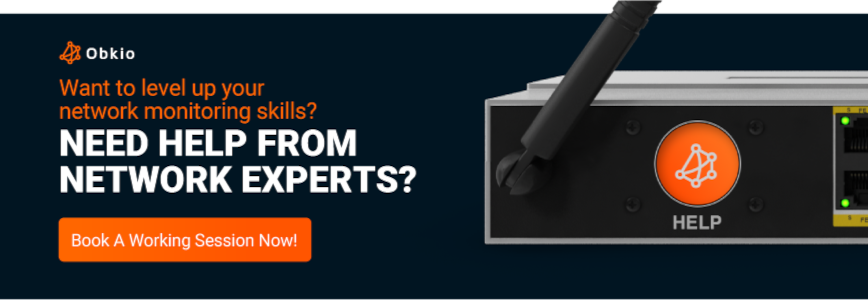
As we reach the end of this article, we want to leave you with a set of invaluable insights and tips that will empower you in your journey towards mastering the art of hybrid network monitoring. These final pearls of wisdom encapsulate the essence of effective network management in the dynamic landscape of hybrid networks.
- Comprehensive Visibility: Monitor all components: Ensure you have visibility into both on-premises and cloud-based resources, including servers, applications, network devices, and cloud services.
- Real-Time Monitoring: Use real-time monitoring tools: Deploy network monitoring tools that provide real-time data and alerts to promptly address issues.
- End-to-End Monitoring: Monitor end-to-end: Track performance from the user's perspective, covering the entire network path from the user's device to the destination server or cloud service.
- Set Baselines: Establish performance baselines: Determine normal network behaviour to identify anomalies and deviations promptly.
- Alerting and Notifications: Configure alerts: Set up alerts for predefined thresholds to receive notifications when network metrics exceed acceptable levels.
- Cross-Functional Collaboration: Foster collaboration: Encourage collaboration between IT teams responsible for on-premises infrastructure and cloud resources to address network challenges effectively.
- Regular Testing: Conduct regular tests: Perform network performance tests, such as synthetic data transfers, to proactively identify potential issues.
- Historical Data Analysis: Analyze historical data: Review historical performance data to identify trends, plan for capacity changes, and optimize resource allocation.
- Multi-Cloud Visibility: Gain multi-cloud visibility: If using multiple cloud providers, ensure your monitoring tools can consolidate data from various cloud platforms for centralized management.
- Hybrid Network Maps: Create network maps: Develop network topology maps that visualize the relationships between on-premises and cloud components.
- Continuous Improvement: Continuously improve: Regularly assess your monitoring strategy and adapt it to evolving network requirements, technologies, and best practices.
By implementing these hybrid network monitoring best practices, organizations can proactively manage their hybrid networks, minimize downtime, optimize performance, and ensure a secure and reliable network environment.
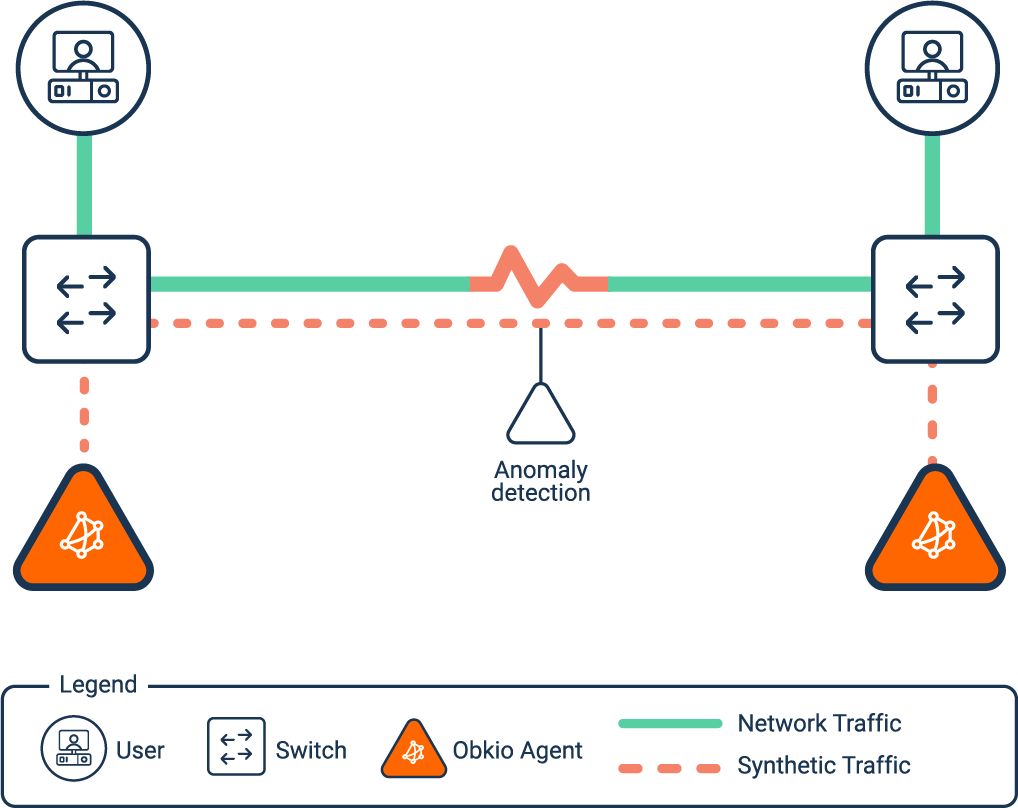
In this comprehensive exploration of hybrid network monitoring, we've embarked on a journey through the intricate landscape of modern networking, where on-premises infrastructure intertwines with the limitless possibilities of the cloud.
Achieving complete visibility into both on-premises and cloud resources is the cornerstone of effective hybrid network monitoring. A comprehensive view empowers you to detect issues, optimize performance, and ensure security across the entire network.
When it comes to elevating your hybrid network's performance and ensuring its reliability, Obkio's Network Monitoring solution stands out as a powerful ally!

- Monitor End-to-End: Obkio offers end-to-end network monitoring, tracking performance from the user's device through the on-premises network and into the cloud. It ensures you have full visibility into every segment of your hybrid network.
- Real-Time Insights: With real-time data collection and analysis, Obkio provides immediate insights into network health and performance, allowing you to take proactive steps to address issues.
- Continuous Testing: Conduct regular performance tests between on-premises and cloud networks to identify potential issues before they impact users.
In conclusion, mastering hybrid network monitoring is an ongoing journey, and the knowledge you've gained here equips you to navigate the complexities of hybrid environments with confidence. By leveraging tools like Obkio, you'll be well-prepared to optimize performance, ensure reliability, and embrace the boundless potential of hybrid networking in the digital age.



























 Obkio Blog
Obkio Blog




